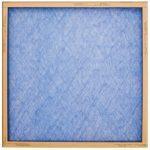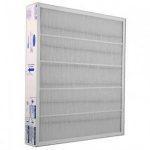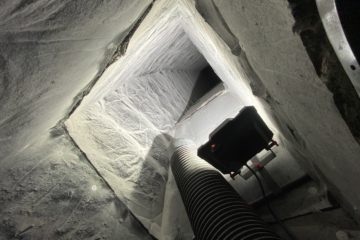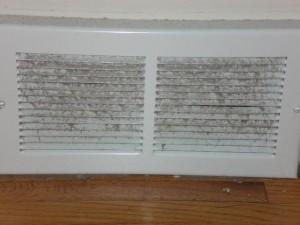 Furnace filters are a key component in your HVAC system. there are many benefits of maintaining your furnace filter regularly.
Furnace filters are a key component in your HVAC system. there are many benefits of maintaining your furnace filter regularly.
Let’s face it, changing your furnaces filtration system is not at the top of your list of chores. Most people completely forget about this task until it’s too late and their furnace breaks down.
Benefits Of Changing Your Furnace Filters
Changing the filter often is a very important aspect to both furnace maintenance and indoor air quality. Here are the primary reasons that you should change your furnace filter frequently.
First, your filtration system is your first and many times only line of defense in indoor air quality. We spend approximately 90% of our lives indoors, doesn’t it stand to reason we should have the cleanest air possible to breathe? The furnace filter comes in contact with all the air that you will ever breathe in your home before the air is conditioned and sent up into the house it must pass through the filter.
Second, a good filter will result in better airflow, better airflow means better efficiency. even the best high efficient furnace systems need a solid, steady supply of air to work efficiently. If your furnace filter is plugged up it’s not going to allow enough airflow for your home and your furnace will have to work longer and harder to maintain the desired temperature.
Third, dirty filters mean dirty furnace equipment, this usually leads to furnace breakdowns or at least reduced performance. Replacing a dirty filter from your HVAC system can reduce your energy consumption by a whopping 15%.
How can I tell if a furnace filter is any good?
Depending on the quality of the filter that you purchase it will remove dust, pollen, bacteria, mold and other allergens from your air. Filters are rated on the Merv system, this stands for minimum efficiency rating value and all quality furnace filters will have a listed rating.
 A filter that is rated between 1 and 4 will have The ability to trap particles that are 10 microns and larger. this includes things such as pollen, dust mites, sanding dust, textile fibers, carpet fibers Etc. This is a poorly rated filter.
A filter that is rated between 1 and 4 will have The ability to trap particles that are 10 microns and larger. this includes things such as pollen, dust mites, sanding dust, textile fibers, carpet fibers Etc. This is a poorly rated filter.
 Furnace Filters that have a Merv rating between 5 and 8 have the ability to trap particles between 10 microns and 3 microns in size. mold, spores, dust mites, pet dander, hairspray, all fit into this category.
Furnace Filters that have a Merv rating between 5 and 8 have the ability to trap particles between 10 microns and 3 microns in size. mold, spores, dust mites, pet dander, hairspray, all fit into this category.
 If your filter has a reading between 9 and 12 this means that will trap particles between 3 microns and 1 Micron in size. We’re getting into the really small particles now and a filter of this rating can’t wrap things such as Legionella, humidifier dust, lead dust, milled flour, and more.
If your filter has a reading between 9 and 12 this means that will trap particles between 3 microns and 1 Micron in size. We’re getting into the really small particles now and a filter of this rating can’t wrap things such as Legionella, humidifier dust, lead dust, milled flour, and more.
 A filter reading between 13 and 16 means you can trap particles between 1 Micron and .3 microns. this is an incredibly efficient filter for home use. it wouldn’t typically be necessary unless you have people in the home that have respiratory problems. You can’t wrap things such as bacteria, nuclear droplets from sneezing, cooking oils, most smokes, insecticide dust, and even paint pigments.
A filter reading between 13 and 16 means you can trap particles between 1 Micron and .3 microns. this is an incredibly efficient filter for home use. it wouldn’t typically be necessary unless you have people in the home that have respiratory problems. You can’t wrap things such as bacteria, nuclear droplets from sneezing, cooking oils, most smokes, insecticide dust, and even paint pigments.
What furnace filter should I buy?
It is tough to decide on what furnace filter you should buy, it’s going to depend on your situation and budget. If you have people in your house but have respiratory problems you are going to need to spend a little more money for a higher-rated filter then a home that doesn’t have any respiratory problems.
When a furnace is installed into a home the most typical installation will have a filter bank that is only 1 in wide. This will limit the choices of filtration available to you unless you hire professional to install a larger filter Bank. Filters that are only 1 inch thick will fill up much faster than a filter that is 5 in thick. Furnace filters that just use straight media versus pleated media will fill up much faster due to less filtration area.
If you choose to go the method of the Disposable filter it is likely going to be 1 or 2 inches in thickness and you should try to get a filter that has a Merv rating of 8 or higher. I would highly recommend a pleated filter versus a straight media filter. these filters do need to be changed approximately every 2 months.
If you choose to have a professional install a better filtration system, the major benefit will be that you do not have to change it as frequently. Filters that are 5 in thick usually only have to be changed once every 6 months. you should still strive for filters that have a Merv rating of 8 or better.
If you have people in your home that suffer from respiratory problems then you might want to consider a HEPA filtration system. HEPA stands for high-efficiency particulate arresting and these are about as good as it gets when it comes to home filtration. Yes, you are going to pay a premium to have this type of filter in your home, but you typically only have to replace it every 1 to 2 years.
How do you change your furnace filter?
Your furnace filters will always be located between your cold air return and the furnace itself. If you’re using 1-inch disposable filters or even professionally installed 5 inch thick filters they will all typically have an arrow on them. the arrow is the direction of airflow, and your airflow always goes from your cold air return into your furnace. so when replacing your furnace filter always point the arrow towards your furnace.
A few furnace filter terms to be aware of
MERV. This stands for minimum efficiency reporting value, it was developed by the American Society of heating, refrigerating, and air conditioning engineers. The system is simple to understand the higher the number the better the filter. I would recommend that you never put a furnace filter in with less than a Merv 8 rating, if you require filtration due to respiratory problems then the Merv rating should be at least 17.
MPR. This is a reading system that was developed by 3M it stands for microparticle performance rating. the rating is designed around the ability of the filter to capture Airborne particles that are smaller than 1 Micron in size. Filters that have an MPR rating of 1500 to 1900 are typically the best.
FPR. Home Depot recently decided to develop their own rating system that is based on a scale of 1 to 10, FPR stands for filter performance rating. Again as with the other rating systems the higher the number the better filtration power.
HEPA. HEPA stands for high-efficiency particulate arresting, these filters are typically reserved for people who have respiratory problems or asthma. They are not typically required for the average person.
Remembering to change the furnace filter
Getting back to the start of this article, furnace filters are not typically on the top of our to-do list. it is probably the most easily forgotten routine maintenance tasks but there is. As we have shared throughout this article that forgetting to perform the simple task can have very damaging effects and be very costly in repair bills.
Putting a white sticker on your cold air return next to the furnace filter and then using an erasable marker to change the date every time you do is a great idea. many furnace cleaning companies we’ll put a sticker of this type on your cold air return when they perform their service.
One great tip would be to put the sticker in a place that you frequent regularly at least once a week, such as your home gym or maybe your deep freeze in the garage. I actually use the latter, I have a sticker that was provided to me from my duct cleaning company where I can put and change the date I last checked my filter. This way I am reminded at least weekly that the furnace filter might need to be changed, But is still out of the general view in my home.
Conclusion
I hope this helps you in deciding which type of furnace filters to buy the next time you go shopping. This is a great investment into your home and health.


